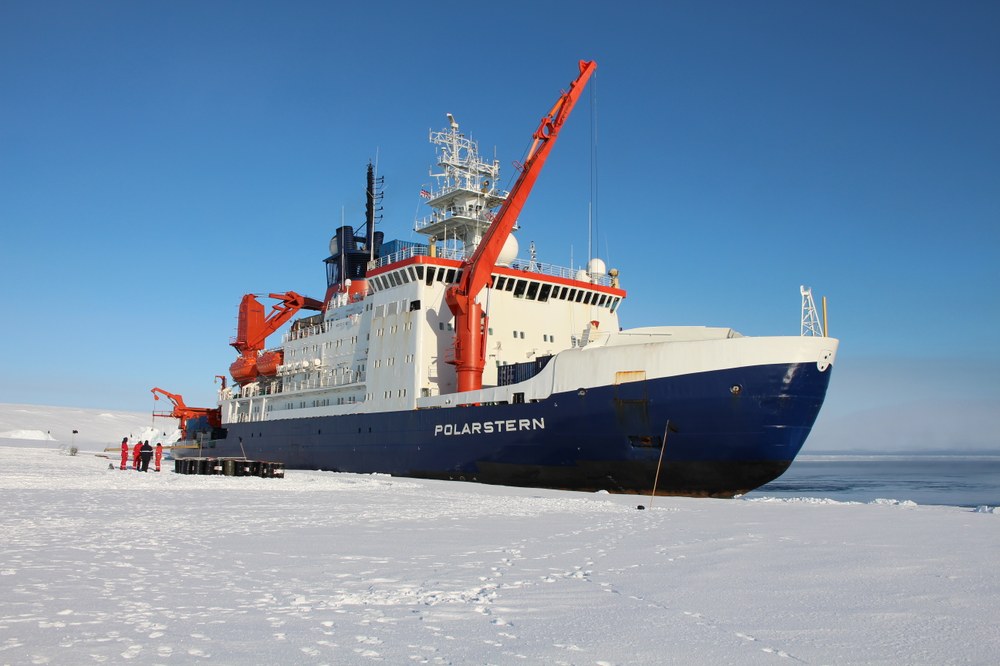Piloting from SpaceEOC supports the Polarstern in the Antarctic

The German research icebreaker ‘Polarstern’ is currently in the Antarctic. Expedition PS 96 is on a route through areas with huge layers of sea ice that could make trouble even for an icebreaker like the Polarstern. EOC is assisting the Polarstern to find a way through the ice by providing information products derived from radar data. This data is being received at DLR’s German Antarctic Receiving Station GARS O’Higgins, processed in near-real-time (NRT), and then delivered to users.
Polarstern Expedition PS 96 started out in December of last year from Cape Town on a trip to ice-covered Atka Bay. It will first bring supplies to the Neumayer-III-Station and then undertake research assignments in the Weddell Sea near the Filchner-Ronne Ice Shelf. It is a typical trip, but this time the crew is receiving help from space on its journey through the ice. The German satellites TerraSAR-X (TSX) and TanDEM-X (TDX) are able to supply for large areas precise information about the ice cover, independent of the time of day and cloud coverage. This makes it possible to plan the Polarstern’s route well in advance.
Twice a day EOC sends up-to-date radar information products to the Polarstern. Just one hour after the raw data are acquired from the satellite, information is available to the captain and his crew. Expedition leader Michael Schröder of the Alfred Wegener Institute Helmholtz Centre for Polar and Marine Research (AWI) stresses the value of this new service for Polarstern. “The captain and I are enthusiastic about the images. Such information is essential for this kind of route. The images can be enlarged to match those from the ice radar one-to-one, so the duty officer can use the satellite image to route the ship. The ice radar only shows the closest one-and-a-half to three miles. And now because of bad weather we cannot use the helicopter. We depend on this data; it helps us to conserve fuel, save time and avoid detours.”
This service can be provided because the receiving equipment at DLR’s Antarctic station GARS O’Higgins is operated year round by EOC. Here, the data is being received immediately after acquisition and, for the first time, the data is also being locally processed and dispatched on the spot.
EOC covers the entire remote sensing spectrum from data reception to processing to developing new information products. This makes it possible to put new developments into practice directly at the receiving facility for near-real-time services. Large amounts of raw data no longer need to be transmitted elsewhere for processing, and users receive customized information products.
Near-real-time (NRT) processing in the Antarctic has been routinely carried out since the beginning of the year. In the future, additional NRT processing will be implemented at DLR‘s GARS O’Higgins station for such worldwide applications as the monitoring of glaciers and shelf ice regions in the Antarctic.


